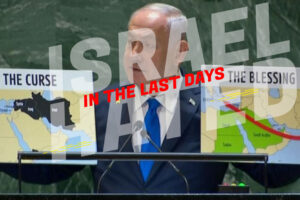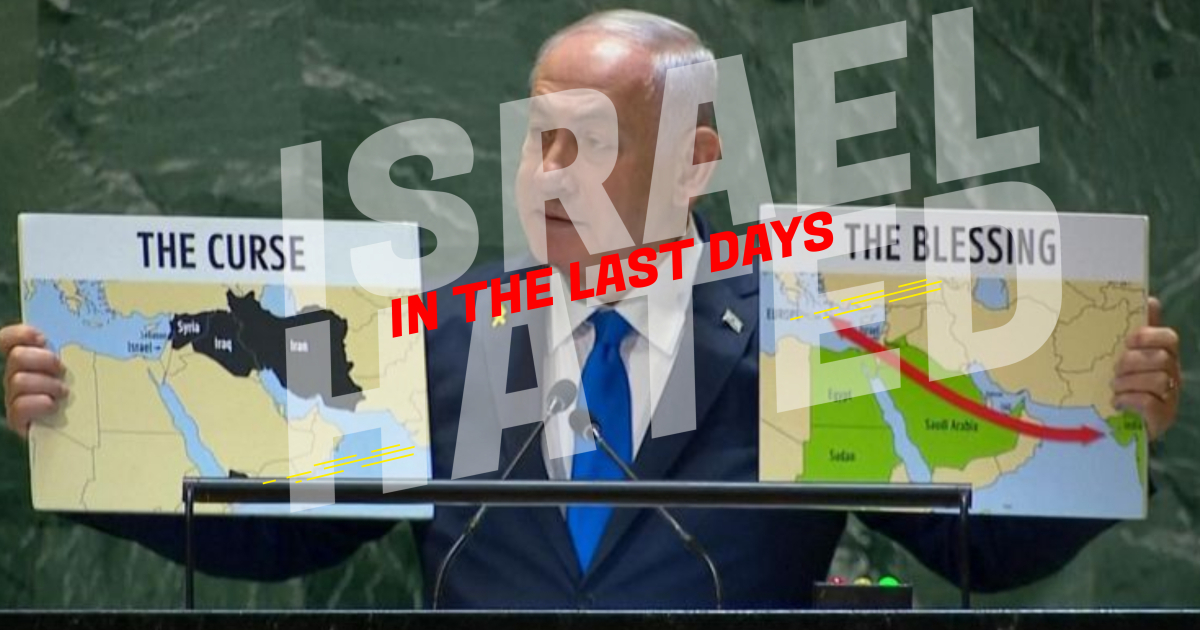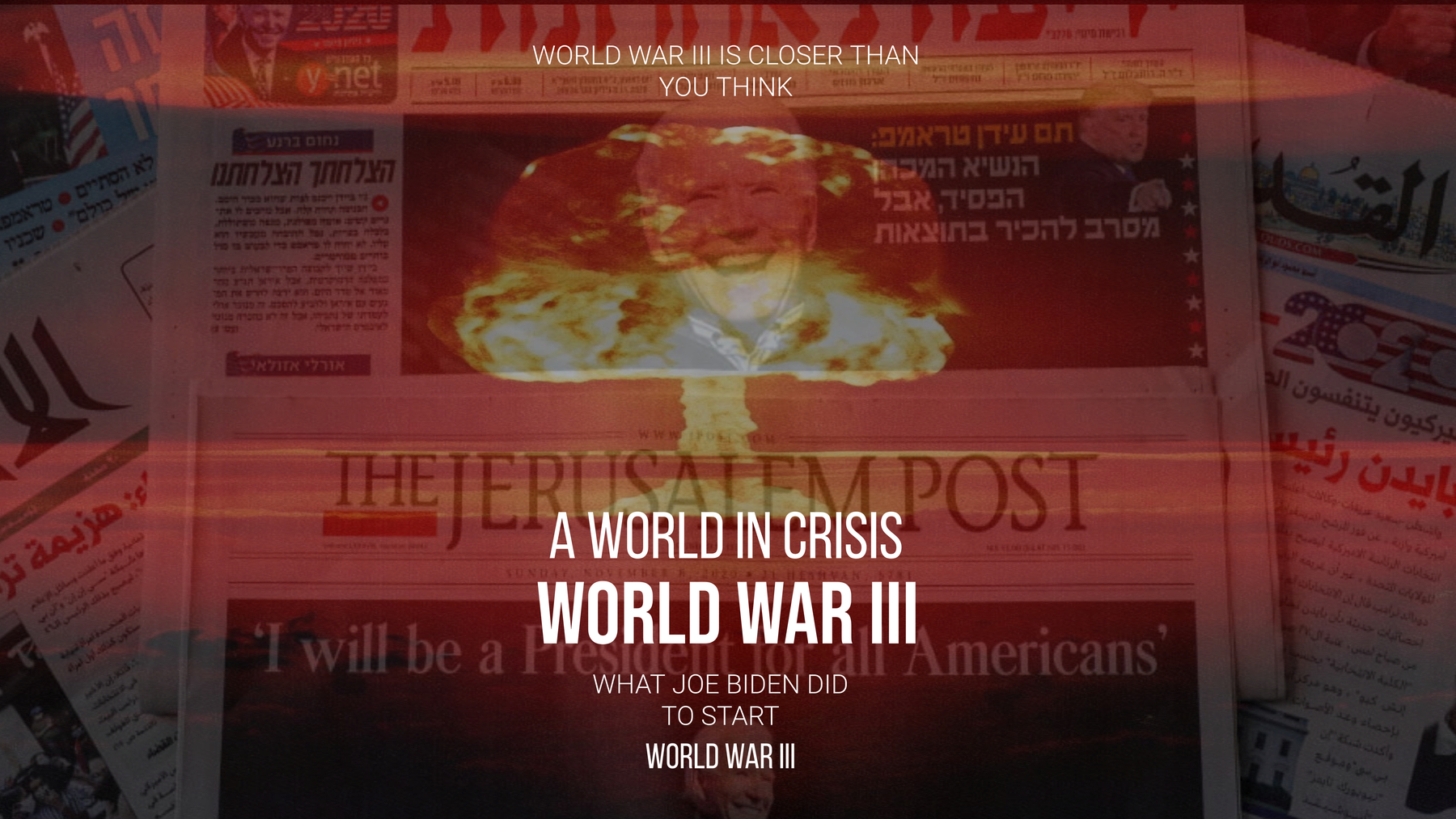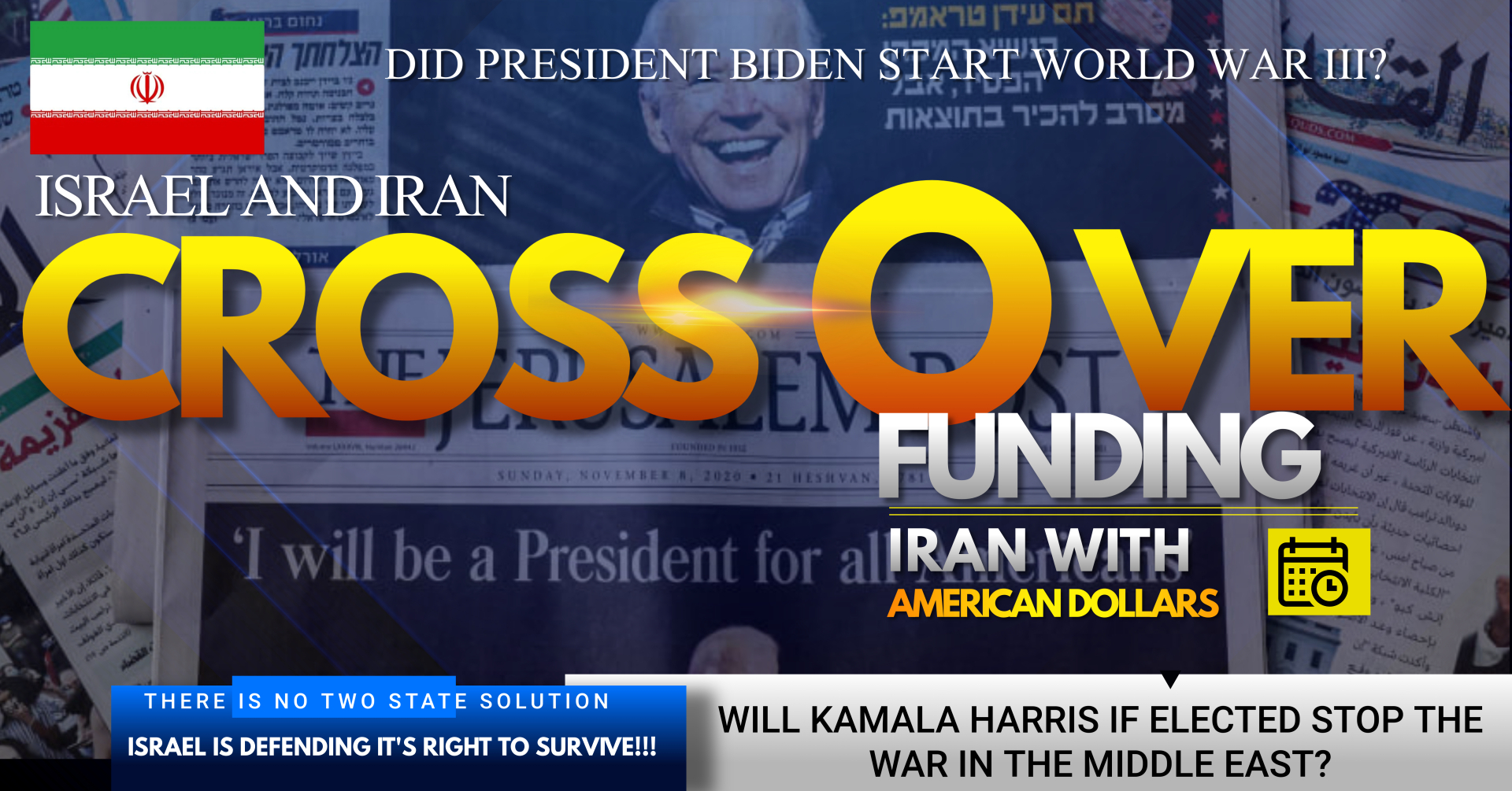By Michael Parker, Michael Snyder, PNW
Michael Snyder
The situation in the Middle East has started to spiral completely out of control, and it appears that just about everyone is bracing for a major escalation. The Chinese are telling their citizens to leave Israel, the Biden administration is sending more troops to the region, and the Israeli government has suddenly decided that now is the time to declare a “special situation on the home front” which grants the IDF extensive authority to issue orders to the general public.
Obviously all three have become convinced that something really big is coming. What do they know that the rest of us do not?
In recent days, many countries have instructed their citizens to leave Lebanon, but I was quite stunned to learn that the Chinese have also told their citizens to evacuate from Israel…
China’s embassy in Israel has asked its citizens to leave the country and return to China in a Sunday night statement.
The embassy added that Chinese citizens should not travel to Israel for the time being.
I think that this is actually a prudent move.
When all-out war erupts, there won’t be anywhere in the entire region that is truly safe.
As I have discussed previously, U.S. citizens have already been instructed to leave Lebanon, and now more U.S. troops are being deployed to the region…
The U.S. is sending troops to the Middle East in response to the surge in violence between Israel and Hezbollah and as the region teeters on the edge of an all-out war.
The Pentagon announced on Monday that ‘additional’ service members would be deployed to join the 40,000 already stationed in the region along with a dozen warships and fighter jet squadrons.
Most Americans don’t realize this yet, but when all-out war erupts in the Middle East the U.S. will be involved.
In Israel, a “special situation on the home front” has been officially declared for the entire country…
On Monday evening, the government approved the declaration of a “special situation on the home front” throughout Israel, following the most intense day of fighting between Israel and Hezbollah since October.
The declaration of the “special situation” significantly expands the IDF’s powers to issue instructions to the Israeli public, allowing it to ban gatherings, limit studies, and issue “additional instructions required to save lives.”
This is a really big deal.
Just imagine what it would be like if the president of the United States gave the U.S. military special authority over cities throughout the United States.
This is quite a dramatic move, and so Israeli officials must believe that all-out war is imminent.
Of course at this point it is difficult to see how an all-out war can be avoided. On Monday, we witnessed “the deadliest day of fighting between Israel and Hezbollah since 2006″…
Missiles slammed into southern Lebanon, shattering the early-morning silence Monday and reportedly killing more than 490 people as Israel said it was targeting Hezbollah weapons hidden in residential buildings. The explosions came as Israel heralded a new wave of attacks on the Iran-backed group in Lebanon, warning civilians to flee from any buildings or areas where the organization had weapons or fighters positioned.
Lebanon’s health ministry said the strikes killed 492 people, including 35 children and 58 women, and wounded 1,645 people, The Associated Press reported. Monday marked the deadliest day of fighting between Israel and Hezbollah since 2006. The death toll also surpassed the deaths from the 2020 explosion at the Port of Beirut that killed nearly 200 people, injured thousands and devastated entire neighborhoods in the Lebanese capital.
We are so close to the unthinkable, and Israel has some decisions to make.
At this point, experts are telling us that Israel has three main options…
There are three options for Israeli planners to consider: air strikes; a massive, Gaza-style invasion; and a “limited” incursion to set up a “buffer zone”.
The first is, of course, the safest. Mr Gallant, the defence minister – no dove, even by Israeli standards – is said to have argued for this option.
It does not commit troops on the ground, avoids the risk of a quagmire, and would not require committing ground forces while the main effort in Gaza (and, increasingly, the West Bank) is still under way.
I would disagree with that assessment.
A “limited” incursion simply is not possible. Hezbollah has stated that it will be all-out war the moment that the IDF crosses into southern Lebanon, and I believe that they are deadly serious about that.
When all-out war erupts, Israel won’t just be fighting Hezbollah. In such a scenario, Israel will be fighting Hezbollah’s entire alliance…
Israel would also have to contend with Hezbollah’s strategic depth. The group is part of an Iran-led axis of militants spanning Yemen, Syria, Gaza and Iraq. Some of these groups have increased coordination significantly since October, when Israel launched a war in Gaza after Hamas-led militants attacked the country. This axis is known in Israel as the “ring of fire.”
For nearly a year, Hezbollah’s partners in the region have been engaged in a simmering conflict with Israel and its allies. Yemen’s Houthis have sporadically fired at vessels in the Red Sea, an artery of global trade, as well as on Israel. Islamic Resistance in Iraq, an umbrella group of hardline Shia factions, has also launched attacks on US positions in that country. The axis has conditioned the cessation of those hostilities on a ceasefire in Gaza, rebranding themselves as a “supportive front” for Palestinians in Gaza, as described by a senior Hezbollah leader.
Israel possesses far superior weaponry, but the combined forces of the Iranian-led “axis of resistance” would vastly outnumber Israeli forces.
A former Major General in the IDF has told the Jerusalem Post that an all-out war with the entire alliance could have disastrous consequences for Israel…
Itzhak Brik, a former Major General in the IDF, told the Jerusalem Post that a full-scale war with Iran and its proxies could ultimately result in the destruction of the state of Israel.
‘Iran and its proxies have 250,000 missiles, rockets, and drones encircling Israel, which means about 4,000 munitions hitting the Israeli home front on a daily basis.
‘Population centres, Haifa Bay, water and electricity facilities, gas fields [in the Mediterranean Sea], IDF bases, and strategic civilian infrastructure… A regional war can ruin the State of Israel,’ he concluded.
Of course the truth is that Benjamin Netanyahu would never allow things to get that far.
If push comes to shove, he will not hesitate to use ultra-powerful weapons that the other side does not possess.
So let us hope that one side or the other backs down before we reach a point of no return.
We are also rapidly reaching a point of no return in Ukraine.
The Ukrainians want to use long-range missiles provided by NATO to strike targets all over Russia, and many NATO officials are very much in support of this dangerous proposal…
“Every nation that is attacked has the right to defend itself,” said Admiral Rob Bauer, speaking at the close of the NATO committee’s annual meeting. “And that right doesn’t stop at the border of your own nation.”
I wonder if the shoe were on the other foot and Russia was sending long-range missiles to Mexico with instructions and training on how to use them against American cities if the esteemed admiral would say Mexico had a “right” to fire those Russian missiles northward.
The consequences of these comments are absolutely stunning, and yet they are made with the flippancy of a Cub Scout leader deciding which is the best way to sharpen a pocket knife.
This is a “red line” that we must not cross.
The Russians have warned us over and over again that we are on a path that leads to nuclear war, and just the other day a Russian television channel broadcast a video that imagined what a nuclear strike on London would look like…
A devastating nuclear strike on London causing 850,000 deaths with two million injured has been simulated by a staunchly pro-Putin propaganda TV channel.
Broadcasting the four minute video with an English commentary appears to be the latest move in a concerted campaign to scare Britain from giving permission to Ukraine to allow Storm Shadow missiles to hit targets inside Russia.
Vladimir Putin’s propagandists and entourage have repeatedly warned that he could use nuclear weapons.
Many people are convinced that western leaders have everything under control and that they know exactly what they are doing.
Those people would be wrong.
I have been warning about the war in Ukraine and the war in the Middle East for years, and many others have been issuing similar warnings.
But our leaders don’t listen to people like us.
They think that they have everything figured out, but the truth is that their arrogance shall be their undoing.
Of course they will not be the only ones to suffer.
Unfortunately, all of us will have to deal with the consequences as thousands of missiles fly back and forth all over the planet.
Originally published at End Of The American Dream
Michael Parker
Some 11 months ago, China told Israel and the Middle east, it was going to assist in a operation to remove its’s citizens from Israel. Now, China has remained in the Middle East, posturing and trying to show the world that America is the Middle East’s problem..This lengthy article explains it all
By Jonathan Fulton and Michael Schuman
Introduction: China, the Gaza crisis, and the new Middle East
In March 2024, the United States sponsored a resolution at the United Nations Security Council on the conflict in Gaza that, at first glance, would appear to have earned support from the government of China. The draft sought “an immediate and sustained ceasefire” between Israel and Hamas, which Chinese diplomats had been vociferously demanding practically since hostilities began after the Palestinian organization committed brutal atrocities against Israeli civilians on October 7. But the proposed resolution was not good enough for China, which vetoed it. Instead, Beijing used the resolution as another opportunity to attack US policy in the Middle East. Zhang Jun, then -permanent representative of the People’s Republic of China (PRC) to the UN, claiming to speak for the international community, criticized the United States for playing a “game of words” and described its resolution as “no different from giving a green light to continued killings.”1
Beijing’s veto is a reminder of China’s deepening involvement in the Middle East and the challenges that presents to Washington in a region vital to American security and economic interests. The Chinese response to the Gaza crisis also highlights how China’s approach to the Middle East is changing, the rising importance of the region in Beijing’s overall foreign-policy agenda, and how China’s greater influence could reshape the relationships that Middle Eastern countries have with each other and the United States. More than even that, China’s intensifying engagement with the Middle East represents a larger shift in its geopolitical strategy—toward achieving a leadership role in the Global South with the aim of promoting its own political power, economic interests, and ideological vision for a new world order.
Beijing’s intentions become clear in its diplomacy on the Gaza crisis, which has been unusually active for an issue so far from China’s immediate neighborhood. In January, Chinese Foreign Minister Wang Yi, during a six-nation tour, stopped in two countries in the region, Egypt and Tunisia, to promote Beijing’s position on the crisis. In Cairo, he issued a joint statement with his Egyptian counterpart reiterating his call for a ceasefire, and then, while in Tunis, he expressed support for the cause of Palestinian national rights.2 Shortly after the crisis began, Beijing dispatched Zhai Jun, its special envoy on the Middle East throughout the region,3 and issued a position paper with the government’s views on resolving the conflict.4 Beijing targeted the Palestinian issue as an avenue of engagement in the Middle East even before the current Gaza crisis erupted. In April 2023, Qin Gang, then-foreign minister of China, offered Beijing’s services as a mediator between the Israelis and Palestinians.5
Yet China’s approach to the Gaza crisis also exposes the limitations of its influence in the Middle East as well as its true intentions and aims in the region. Beijing’s diplomatic efforts toward the Gaza conflict have barely inched beyond the rhetorical. Chinese leaders have simply regurgitated the widely accepted formula for a “two-state solution” to the Israel-Palestinian dispute without proposing any fresh ideas or initiatives that could facilitate such a settlement. Nor have they engaged in concerted diplomacy with the combatants to defuse the crisis, and it appears they lack the pull and capacity to bring the Israelis and Palestinians to the negotiating table.
If anything, Beijing’s lopsided response may have disqualified China as a credible mediator in the crisis, at least in the eyes of the Israeli government. While Beijing officials claim to be even-handed on the issue, in practice their position has been overtly pro-Palestinian and even pro-Hamas. Chinese diplomats have routinely called on Israel to show restraint and cease hostilities, but have never condemned Hamas for its terror attack on Israeli civilians that started the current conflict. This past July, Beijing did, however, condemn the assassination of Hamas leader Ismail Haniyeh in Iran.6 The bias has not gone unnoticed, or in certain circles, unappreciated. The Palestinian envoy to the United Nations praised China in January as “a true friend ready to do everything they can to help the Palestinian people.”7
In reality, though, “everything they can” has amounted to very little. In some respects, Beijing’s interventions may be making a settlement of the Palestinian question more difficult. Instead of engaging the Israelis, Beijing is encouraging a reconciliation between rival Palestinian factions Hamas and Fatah. In July, Wang Yi hosted a meeting of representatives of the two factions, and others, who signed a pact called the “Beijing Declaration” and pledged to form a unified government (though it is far from certain this attempt will lead to any tangible results.8 Such Chinese intervention could bolster Beijing’s often-repeated narrative that China is a force for peace. But by bringing Hamas in from the cold, China could in reality make it almost impossible for Israel to seriously negotiate with the Palestinians on any future agreements.
Rather than acting as a constructive stakeholder, Beijing is attempting to capitalize on the Gaza crisis to promote its own power, not just in the region, but in the wider Global South. Its response is custom designed to appeal to the Global South, where the Palestinian cause is widely popular. The idea is to characterize itself as the champion of the world’s downtrodden and a voice for peace in contrast to the United States, which the Chinese propaganda machine tries to paint as favoring war and oppression. “China firmly supports the Palestinian peoples’ just cause of regaining their legitimate national rights,” Wang stated in a March press conference, “and urge[s a] certain U.N. Security Council member”—the United States—“not to lay obstacles to that end.”9
China’s leaders thus perceive their role in the Middle East in the context of their greater geopolitical competition with the United States. As its Gaza approach shows, Beijing intends to use its influence in the region to upset American policy and promote its own influence and vision in its place. In that, Beijing’s stance on Gaza is part of a significant shift in Chinese foreign policy toward the Middle East—from “hedging” by maintaining positive relations with regional actors to “wedging,” or attempting to exploit space between the US and its partners and allies in the Middle East. The key question is whether this more assertive China will encourage regional stability or instability.
China’s interests in the Middle East
Throughout the twenty-first century, China’s presence in the Middle East has evolved significantly. Beijing has built upon previously modest bilateral relationships to establish a whole-of-region approach, using bilateral and multilateral engagement to support deeper economic, diplomatic, cultural, and security ties. The result is transformational: a country once perceived to be of marginal importance has become a major regional actor.10
China’s political and diplomatic engagement in the Middle East has intensified, but the region is not as central to Beijing’s foreign policy concerns as its relationships with great powers, the United States and Russia, or the several countries—friendly or hostile—in its immediate vicinity. In China’s diplomatic efforts, the Middle East has unique importance for two general purposes. First, China aims to buttress its image as a great power. The Middle East is an important region, encompassing religious, geopolitical, and resource security; major countries need to be present, so China is present. Second, China wants to enhance relations with countries that are important markets, sources of energy, partners in lucrative contracting, and geopolitically strategic.
Country-to-country ties
China’s primary engagement in the region is through bilateral relationships. It has established diplomatic relations with every state in the Middle East-North Africa (MENA), with Israel the final one in 1992. Given China’s focus on its own sovereignty, it works with states rather than nonstate actors. The prevalence of such actors as Hezbollah, Hamas, and the Houthis present a challenge for Beijing’s regional interests.
To get more out of its bilateral relations, China uses a hierarchical system of classification known as “partnership diplomacy,” which has a “friendly cooperative partnership” at the low end and a comprehensive strategic partnership as the highest designation in Chinese diplomacy.11
Israel has a unique, innovative comprehensive partnership. The five Middle Eastern states with comprehensive strategic partnerships—Algeria, Egypt, Iran, Saudi Arabia, and the United Arab Emirates—are considered the most consequential for China’s regional policy.12
Not surprisingly, they are also the countries where Chinese companies are the most active. China’s highest-value contracts are in Saudi Arabia and the UAE, followed by Algeria, Iran, and Egypt in that order (see table 2). These partnerships, however, are not alliances. They may feature language about cooperating in security affairs, such as joint training exercises, but they do not have any obligations attached. China has a long-standing nonalliance policy and the Middle East, with its myriad rivalries and conflicts, is certainly not going to be the exception
At the international level
In addition to country-to-country ties, China has established multilateral organizations in the region as well. These include the China Arab States Cooperation Forum (CASCF), the Forum on China-Africa Cooperation (FOCAC), and the China-GCC Strategic Dialogue with the Gulf Cooperation Council.13 Each of these provide opportunities to coordinate policies between China and member states.
International organizations are another emerging arena of cooperation for China and certain Middle Eastern states. In particular, two intergovernmental organizations in which China has a leadership position have expanded into the Middle East: BRICS and the Shanghai Cooperation Organization (SCO). In August 2023, leaders from BRICS announced that Saudi Arabia, Iran, Ethiopia, Egypt, Argentina, and the UAE would join in 2024. Meanwhile, in July 2023 the SCO finally admitted Iran as a full member, a status Tehran has been pushing for since 2008. Egypt, Qatar, Saudi Arabia, Kuwait, and the UAE were all admitted as dialogue partners, a designation that allows them to participate in SCO meetings on issue areas that they have applied to discuss. They do not have voting or agenda-setting rights.14 While neither the BRICS nor the SCO have track records of meaningful organizational achievements, they both represent alternatives to Western institutions and the liberal norms and practices that underpin them.
It is in the economic realm where China’s presence in the Middle East is the most significant, with trade, contracting, finance, and investment driving much of its presence. Its impact in trade is well documented. China is the top trade partner of more than 120 countries, the most in the world, a trend that holds in the Middle East.15 If the Middle East and North Africa is defined as the twenty-two Arab League countries, plus Israel and Iran, China is a top five source for imports of every state in the region, as well as an important export market for several. Total China-MENA trade in 2022 was valued at just under $430 billion. Across the region, however, the nature of China’s trading relationships differ significantly. In the energy-rich Gulf states, for example, China is a major customer as well as a source of trade in goods. In Saudi Arabia, Qatar, Kuwait, Oman, and Iraq, China consistently buys more than it sells. While this makes China an incredibly important market, it also reinforces patterns of vulnerability that the Gulf energy exporters would prefer to break. In each of these countries, hydrocarbons or petroleum-product exports account for the vast majority of exports to China, while they import a wide range of Chinese consumer and industrial products. For countries planning to build post-hydrocarbon economies—and many in the Gulf are—the centrality of energy in their trade with China is a long-term liability. That China has announced that its carbon emissions will peak before 2030 and that it will be carbon neutral before 2060 demonstrates the long-term problem facing Gulf energy exporters.
For other Arab countries, the trade transaction flows look very different. As the top source of imports, China has an outsized role in their economies. Affordable Chinese products are good for consumers, but not necessarily for local companies that cannot compete with China’s economies of scale.
China is the top trade partner for both Iran and Israel, although there are significant political tensions in both relationships. Israeli trade with China has been very imbalanced over the past decade, with substantial Chinese imports and relatively little in the way of exports to China. In 2022, for example, China was Israel’s top trade partner, while Israel was a minor one for China, ranked thirty-sixth as an export destination and forty-third as a source of imports.16 This asymmetrical economic relationship is problematic for Israel, a point that became more evident with China’s response to the October 7 Hamas attack. China’s political and diplomatic position demonstrated to Tel Aviv that its top trade partner was unreliable, willing to use it as a tool to criticize the United States and simultaneously curry favor with publics and governments in the Arab world and broader Global South.
In Iran’s case, there is a similar asymmetry at play, although its energy reserves make it a far larger export partner. Trade is therefore more balanced in terms of value, but not in terms of diversity. Iran sells crude at below market prices, and China sells low-quality consumer goods or barters with other products, like telecom parts it cannot access from the West due to economic sanctions. Despite these sanctions, China has steadily increased its energy purchases from Iran over the past several years, typically buying Iranian crude indirectly via a third country, and refining it at domestic teapot refineries.17 Since they are domestic and do not trade internationally, these refineries are not linked to the SWIFT financial network and therefore not subject to US sanctions. The limits of this have become apparent recently, as the Iranians began withholding shipments, unsatisfied with the deal they cut with Beijing and looking to establish a better price.18 Still, Tehran has limited leverage, since China purchases nearly all of its current oil exports.19 In any case, trade has been unsatisfying for Tehran. When announcing the comprehensive strategic partnership in 2016, the countries projected bilateral trade to reach $600 billion by 2026.20 The high point came in 2018, when it reached just over $30 billion; by 2022 it was down to $12.5 billion. Chinese investment has likewise been marginal, with Iran receiving only $185 million since operationalizing the partnership agreement in January 2021, compared with more than $5 billion from Saudi Arabia over the same period.
While China is clearly a major trade actor, it has yet to establish a free trade agreement (FTA) with any local country or organization. A China-GCC FTA has been in the works since 2004, but has moved in fits and starts. At different points both sides were reluctant, but during his 2016 visit to Riyadh, Xi emphasized that China wanted to see the deal completed within a year. The GCC rupture of 2017 put an end to that goal, with no movement until Qatar reconciled with its Gulf neighbors in 2020. The China-GCC summit in December 2022 showed no signs of getting closer to a done deal, but it was a focus again in an August 2023 conversation between Wang and UAE Foreign Minister Sheikh Abdullah bin Zayed Al Nahyan, with the Global Times reporting that Wang said “the two sides should strive for an early conclusion of the China-GCC FTA.”21 In May 2024, Reuters reported that Saudi Arabia was stalling the talks because of concerns that “cheap Chinese imports could undermine its ambitions to transform the kingdom into an industrial powerhouse.”22
Chinese companies have been major contractors across the region, linking cooperation priorities in Beijing’s infrastructure-building program, the Belt and Road Initiative, missions by Chinese state-owned enterprises, and development agendas of regional governments. Data from the American Enterprise Institute’s China Global Investment Tracker show a tremendous synergy and growth since 2005, especially since 2013 when the BRI was announced and became a useful mechanism for Chinese private companies and state-owned enterprises to secure operational and funding support for a greater range of overseas projects (see Table 2). The BRI brand and promotion as well as the PRC’s political motivation to use it to enhance China’s global standing resulted in tangible outcomes, and governments in the region hungry for development, investment, and infrastructure were receptive.
One controversial driver of Chinese engagement in the Middle East has been on the technology front. Huawei has been particularly active, signing 5G contracts with at least fourteen regional telecom operators since 2018. Chinese artificial intelligence (AI) has also been making significant inroads, especially in the wealthy GCC countries. Of course, both 5G and AI have been flash points in US-China competition and the Middle East has been a major theater in this rivalry. In Middle Eastern countries with security cooperation agreements with the United States, Washington has concerns that their military technology could be compromised by Chinese companies. This recently came to a head in the UAE. G42, a major AI company in Abu Dhabi led by National Security Adviser Sheikh Tahnoon bin Zayed Al Nahyan, had been working closely with several Chinese AI firms. In December 2023 it dramatically announced that it was divesting from all of this Chinese cooperation and signed a major deal with Microsoft.23 Chinese companies complained that this was a political rather than commercial decision, but Microsoft offers best-in-class AI. According to Macro Polo’s The Global AI Talent Tracker 2.0, the United States “remains far and away the leading destination for the world’s most elite AI talent (top ~2%) and remains home to 60% of top AI institutions.”24 This seems to resonate in Saudi Arabia; in May 2024 the CEO of Saudi Arabia’s semiconductor and AI investment fund Alat said, “So far the requests have been to keep manufacturing and supply chains completely separate, but if the partnerships with China would become a problem for the US, we will divest.”25
Beyond these political and economic interests, there is a broader factor of how the region fits into Beijing’s global objectives. The BRI is the load-bearing pillar of its foreign policy, used to develop deeper relations in key countries and regions while attempting to demonstrate China is a great power focused on development and economic-driven solutions to global governance, supposedly in contrast to the West and the United States. In the BRI, the Middle East is a major hub, linking markets and business clusters. China does not yet have a significant strategic position in the region, with the People’s Liberation Army Supply Base in Djibouti its lone military facility in the region. It has adopted the Shekou model of ports and industrial parks across the region,26 but so far has limited power projection in the Middle East, a point reinforced by its refusal to do much of anything in the Red Sea amid recent disruption of shipping by the Houthis in Yemen.
Recent initiatives meant to build upon the BRI—including the Global Security Initiative, the Global Development Initiative, and the Global Civilization Initiative, all statements of Beijing’s ideological principles for a reformed world order—are designed to further distinguish China as a global alternative to normative approaches to the international system and see the countries of the developing world as natural partners.27 In the Middle East, Beijing has been trying to bring countries into this consensus, but it is not clear if this represents a normative alignment or simply opportunism on the part of regional governments.
Middle East responses
For countries in the Middle East, China’s emergence as a major extraregional power is largely seen as a positive development. China is a permanent member of the UN Security Council, has the world’s second-largest economy, a rapidly growing military, and ambitions to be a global power. It dramatically transitioned from an underdeveloped country in the late 1970s to a technologically advanced one that has overseen a dramatic rise in living standards. For all of these reasons, deeper ties to Beijing are seen as important and necessary.
There are several factors that are likely driving an appreciation for China. First, there is a perception that Beijing does not criticize local governments and societies over domestic social and political issues, whereas Western democracies focus on several sensitive issues—human rights, gender equality, civil society, and media freedom—to name a few. Middle Eastern leaders know they will not be embarrassed or pressured on these points when a Chinese official visits. Related to that is the perception that economic cooperation with China compartmentalizes political concerns. As long as your government accepts China’s stance on its core interests—the one China principle, first and foremost—trade is apolitical. The price point difference and speed of getting things done is yet another reason; Chinese multinationals are seen as reliable, fast, and comparatively cheaper than their competitors. That China can point to its own infrastructure boom as evidence helps. As one Gulf businessman recently said, “If we’re looking for a company to help develop a port, we can look at a Chinese firm and it’s built 100 of them. They know what they’re doing.”
However, this does not mean that countries in the Middle East are going into their respective relationship with China blind, or that they are engaging China from a position of weakness. They are using their agency, like anyone, in trying to maximize their benefits. The G42/Microsoft example is illustrative: the UAE got the tech and the relationship it wanted, while the United States and China competed for a lucrative and strategically important sector with the Gulf’s most ambitious AI firm. China has a lot to offer and has shown an ambitious approach to engaging with the Middle East. For regional governments, this is an opportunity to work with Beijing, or use it to get a better deal from its competitors.
Systemic considerations in China’s approach to the Middle East
China clearly has interests in the Middle East and uses a range of economic and diplomatic means to achieve them. However, there is a geopolitical level to consider as well. China faces several foreign policy challenges along its borders and maritime boundaries, with fragile states, hostile rivals, and US allies and partners surrounding it. Its own periphery takes much of its foreign policy energy, resources, and focus. The Middle East is not a first-level foreign policy concern for Beijing, and as described above, its interests in the region are primarily economic. At the same time, the US-China bilateral relationship has long been a key feature of its approach to the region.
The PRC has always engaged with the Middle East through a two-level approach: how does it affect China’s political economy, and how does the region affect pressures at the level of the international order. During the Cold War, bipolarity was the defining feature of the international system and the state of China’s relationships with the Soviet Union and the United States informed its Middle East policy. Post-Cold War unipolarity also explains China’s presence in the Middle East. US hegemony in the region supported a status quo that benefited Washington’s allies and partners, and excluded countries like Iran, Iraq, Syria, and Libya that rejected or challenged American preponderance. Other countries were knitted into a security architecture that came with defense and facilities cooperation agreements, military-to-military cooperation, arms sales, and a network of bases. This security umbrella allowed other extraregional powers with interests in the Middle East—including China—to deepen their own positions without a corresponding security commitment.28 The safety of Chinese expatriates, assets, and investments was assured under this architecture. That is not to say that Beijing approved wholesale of US policy in the region. Like many countries, China was against the Iraq War, but not to the point that it was willing to challenge the United States directly over it. US preponderance was the defining characteristic shaping China’s approach to the Middle East.
The logic of hedging
In a region where multiple external powers have deep interests, international relations (IR) theory describes a range of approaches. The balance of power is the most common realist prescription. As the less powerful actor, China could balance against the United States using regional partners like Iran to dilute US power. However, China’s relationship with Iran is countered with even stronger partnerships with its rivals on the Arab side of the Gulf, all of which are US allies or partners. Balancing is therefore an inaccurate description of what China has been doing. Another typical approach to a region under a dominant power would be to bandwagon: to accept the leadership of the United States and adopt policies that largely follow its preferences. In this case, China’s relationship with Iran demonstrates that Beijing is not bandwagoning either.
That China has long been seen as sitting on the fence in regional disputes is often characterized as neutrality—of not taking a position. This is also inaccurate; China has strong positions on most issues, but does not publicize them. The Qatar crisis from 2017 is a case in point. When the dispute broke out, Foreign Minister Wang offered to mediate—an offer that was ignored—and China’s ambassador to the UN said it should be resolved by the states directly involved. Publicly, its response was neutral. Its actions, however, demonstrated a clear preference for working with the larger bloc of states—Egypt, Saudi Arabia, the UAE, and Bahrain—than isolated Qatar. Xi visited the UAE the following year and elevated the UAE from a strategic partnership signed in 2012 to a 2018 comprehensive strategic partnership, with the joint communique praising “the constructive role being played by the UAE in regional affairs,”29 a phrase that likely would have rankled leaders in Doha. When Qatari Emir Tamim Al Thani visited Beijing in January 2019, the Chinese side did not offer a similar partnership upgrade to Doha, instead calling to deepen cooperation through their existing framework. Public messaging emphasized neutrality while China’s actions proved that it was tipping the scales in favor of Qatar’s rivals, while working to maintain a functional relationship with Doha.
A more apt theoretical description of China’s approach to the region is strategic hedging. This is a concept that has become blunt from misuse in recent years, with nearly every range of foreign policy behavior described as an example of hedging. In IR literature, however, it has a specific definition. Strategic hedging is an approach for a second-tier power that wants to develop a regional presence without disrupting a beneficial status quo.30 A successful hedger does not challenge the dominant power or alienate regional countries, promoting itself as a useful partner for everyone. It expands its regional capabilities, usually through economic means, and then cautiously develops its political influence and military capabilities.
This reflects China’s approach to the Middle East, where it has developed relations with all countries, based largely on economic interests, as a means of building a relatively positive presence. Every Middle Eastern government wants to attract Chinese trade and investment, and with an increasingly multifaceted approach to economic statecraft it has become one of the most important extraregional economic partners of states throughout MENA.31 Adopting a firm line on regional political or security disputes would negatively impact its relations with one or more states, so it continues to hedge, knowing that as long as the United States maintains its leadership role there is little to no cost associated with this strategy in the near term.
We believe this is a fair representation of China in the Middle East up to 2019, after the United States withdrew in May 2018 from the Joint Comprehensive Plan of Action (JCPoA), previously negotiated by the Obama administration to contain Iran’s nuclear program, and implemented the maximum pressure campaign against Iran. Until that point, Beijing got most of what it wanted from the region under the US-preferred status quo; the regional order was satisfactory if imperfect, and working within this order offered more than China could reasonably expect to get by challenging it. Beijing maintained comprehensive strategic partnerships with Saudi Arabia, Iran, and the UAE without getting entangled in their rivalries, expanding commercial and political engagement with all of them. It maintained good relations with Israel and Palestinian representatives, occasionally calling for action but not alienating either to a significant degree. Its regional forums grew in ambition and scope, with greater diplomatic visibility yet without the expectations of leadership on hot-button issues. Its economic presence grew exponentially. And all the while, it let the United States absorb the costs of leadership. When it disagreed with Washington, it did so quietly, and never enough to challenge the US position. This is a textbook definition of strategic hedging.
The transition to wedging
Throughout the 2010s, thinking in the United States about China’s rise changed. The US government had largely come to a consensus that engagement with China was a failed experiment. There had been a long-standing expectation that China would be socialized into the liberal international order and ultimately see the benefits of working within it, becoming, in former US Deputy Secretary of State Robert Zoellick’s phrase, a responsible stakeholder.32 In the second half of the Hu Jintao era it was becoming evident that this was not the case. Not only were Chinese leaders uncomfortable with US leadership amid the global financial crisis, but they were also increasingly confident in China’s role as a global leader.
Under Xi, this view has taken a more strident turn. Globally, there were issues that demonstrated a clear divergence from the liberal international order. The militarization of the China-built islands in the South China Sea, despite Xi’s assurances in 2015 that it would not, is a case in point.33 Beijing’s currency manipulation of the global trading system, despite commitments when joining the World Trade Organization, also showed a thin level of respect for this order.
From the US perspective, thinking on China was changing during the second Obama administration, but the 2017 National Security Strategy, which identified China as a great power competitor, and the ensuing focus on the Indo-Pacific as the priority theater in US defense and foreign policy reinforced perceptions in Beijing that it would remain on the outside of the US-led order. Speaking of that Indo-Pacific focus, Foreign Minister Wang denounced that order as “essentially a strategy for creating divisions, a strategy for inciting confrontation, and a strategy for destroying peace.”34 For Beijing, the security institutionalization of the Indo-Pacific—including the Quad, AUKUS, and the Malabar joint naval exercises—is perceived as a China containment strategy.35 The trade war during the Trump administration was yet another pivotal moment when Chinese leaders saw the liberal international order as inherently hostile to their global interests.
However, in the Middle East there was already evidence of a more assertive Chinese foreign policy that diverged from Washington’s preferences. Beijing was clearly opposed to the US withdrawal from the JCPoA, having been one of the countries involved in its negotiation. While China’s contribution to the JCPoA is considered minimal, there was frequent behind the scenes diplomacy from Beijing to Tehran in the run-up to its completion. John Garver documented seventeen meetings between Chinese officials and their Iranian counterparts leading up to the JCPoA, with the promise of Chinese investment linked to the successful resolution of the agreement providing extra incentives.36 After it was signed, Xi became the first head of state to visit Iran, making a state visit in January 2016, during which the China-Iran comprehensive strategic partnership was signed. The US withdrawal from JCPoA and the ensuing maximum pressure campaign were seen by China as reckless unilateralism that undermined the preferences of other signatories, and also as triggers that would lead to a less stable region, ultimately threatening their interests. At a December 2019 meeting between Foreign Ministers Wang and Mohammad Javad Zarif, Wang said China will stand with Iran “against unilateralism and bullying” and claimed, “the unilateral withdrawal by the United States from the JCPoA, giving up on its international commitments and [attempts] to exert maximum pressure on Iran are the sources of the current tension arising over the Iranian nuclear issue.”37 Three days later, the United States assassinated Qasem Soleimani, leader of the Quds force of Iran’s Islamic Revolutionary Guard Corps. During a call, Wang complained to Zarif that “the dangerous U.S. military operation violates the basic norms of international relations and will aggravate regional tensions and turbulence.”38
That China supported Iran during this period is not especially unusual; as described above, Chinese leaders saw US policy in the region undermining their interests, and US policy globally as a means of trying to contain China’s rise. One thing that was unusual, however, was the messaging Chinese leaders used when communicating with their Middle Eastern counterparts. Rather than quietly disagreeing with the United States and maintaining the strategic hedge, they directly questioned US policy in the Middle East and promoted narratives of an unreliable partner that exacerbates regional tensions.
In essence, China transitioned from hedging to wedging.39 A wedge strategy is a “state’s attempt to prevent, break up, or weaken a threatening or blocking alliance at an acceptable cost.”40 In this case, China was exploiting regional concerns about US Middle East policy to create and take advantage of space between the United States and its allies and partners in the region. This is in response to US policy, but what’s more important in the Indo-Pacific is that US power and its network of alliances directly threaten China.
China’s shift to wedging in the Middle East was not solely a response to changes in American politics and policy. Xi’s ambitions to assert Chinese power globally also widened. Some of the motivation may have been a function of Chinese domestic politics. As Xi consolidated political power in his own hands and economic gains—the main source of the leadership’s “performance legitimacy”—became more difficult, Xi increasingly turned to nationalist causes and promises to make China great again to justify his one-man rule. Much of this heightened effort to expand Chinese political, economic, and cultural power was directed at the Global South, where Xi seems to believe his ideas and leadership will be more welcome. He began to more overtly challenge the US-led liberal world order, especially since 2021, with his deepening partnership with Russia and the release of homegrown initiatives for reformed global governance. Gaining influence in the Middle East was, therefore, an element of a greater geopolitical agenda to assert Chinese leadership of the Global South in a campaign to remake the world order and roll back American hegemony.
In the Middle East, this wedging strategy has played out in material terms as well as through Chinese officials’ messaging to regional governments and publics. In 2021 Foreign Minister Wang made two highly publicized trips to the region, and the outcome that received the most attention was the activation of the 2016 comprehensive strategic partnership with Iran. On the same trip, Wang stopped in the UAE, where China’s Sinopharm and the UAE’s G42 announced a joint venture to produce the Sinopharm COVID-19 vaccine in the Gulf country. Throughout the trips, which took him to Saudi Arabia, Turkey, Iran, the UAE, Oman, Bahrain, Syria, Egypt, and Algeria, Chinese messaging promoted “China as an influential power, amid U.S. confrontational moves and world chaos.”41 It was also used to promote the narrative of China as a responsible regional actor. In Saudi Arabia, for example, Wang rolled out a five-point plan for Middle East security and offered an invitation to Israel and Palestinian “public figures” for peace talks.42 That neither came to fruition wasn’t the point; it burnished China’s image as an important player in the region with alternative solutions to those preferred by the United States.
Later in 2021, China’s wedging took on a stronger form as it was reported that China was building a military facility in the UAE.43 The Emirati government objected to the characterization of the project as having a military purpose, with Presidential Advisor Anwar Gargash saying, “The UAE’s view was that these certain facilities in no way could be construed as military facilities.”44 However, the US government appeared to take the story seriously, and it resurfaced again in 2022 in a Washington Post story.45 Also in 2021, CNN reported that China was helping Saudi Arabia develop a domestic ballistic missile system.46 The timing was especially sensitive, coming at a time when the United States was negotiating with Iran in an attempt to revive the JCPoA.
In January 2022, six Middle Eastern foreign ministers, along with the GCC secretary general, paid an official visit to Wang in Wuxi, China. One delegation included foreign ministers from Saudi Arabia, Kuwait, Oman, Bahrain, and the GCC secretary general, and Turkish and Iranian foreign ministers followed separately.47 The visits did not result in significant material outcomes, but the wedging messaging was amplified when Wang spoke to the Chinese media after his guests left. The Middle East, he said, “is suffering from long-existing unrest and conflicts due to foreign interventions . . . We believe the people of the Middle East are the masters of the Middle East. There is no ‘power vacuum,’ and there is no need of ‘patriarchy from outside.’ ”48 This unsubtle jab was meant to demonstrate to regional governments and publics that China represents a different type of great power from Western liberal countries, a narrative that was repeated later that month when the defense ministers of China and Saudi Arabia, Wei Fenghe and Prince Khalid bin Salman al-Saud, respectively, held a virtual meeting. Wei said that the two countries should “strengthen cooperation and jointly oppose hegemony and bullying practices, to safeguard the interests of developing countries together.”49
It is not a coincidence that these narratives were prominently featured during these meetings with regional leaders, because shortly afterward the Global Security Initiative was introduced by Xi in a speech at the Boao Forum.50 This represents Beijing’s efforts to promote non-Western, nonliberal norms of global governance, and the primary constituency is the developing world, or Global South. The Middle East, with its long and complicated history of engagement with the United States, is seen in Beijing as a region ripe for this kind of state-centered approach, explaining why Chinese leaders have adopted a more assertive message when talking to leaders from the region. The 2023 Global Security Initiative Concept Paper makes China’s preferences explicit and highlights the contrasts in how Beijing sees Western dominance of global governance: “The Cold War mentality, unilateralism, bloc confrontation and hegemonism contradict the spirt of the U.N. Charter and must be resisted and rejected.”51
China’s involvement in the Saudi-Iran rapprochement provided another opportunity to promote the utility of the GSI in managing Middle Eastern dilemmas. In March 2023, China brokered an agreement between longtime rivals Iran and Saudi Arabia to restore diplomatic relations.52 During the closing ceremony of the talks, Wang described the deal as an example of the GSI’s focus on promoting dialogue, also taking the opportunity to point out that China would support Middle Eastern countries in “casting off external interferences.”53 In a follow-up meeting in Beijing a month later, then-Foreign Minister Qin described the rapprochement as “a case of best practice for promoting the Global Security Initiative.”54
In the time since the October 2023 Hamas terrorist attack on Israel, and the ensuing war in Gaza, China’s wedging narrative has only increased. A widely circulated article from Li Weijian, a professor in the Middle East Institute of Shanghai International Studies University, begins with the premise that “much of the past chaos in the Middle East was caused by the West, especially the United States,” and describes the Global South’s response to the war in Ukraine and Gaza as follows:
- In handling the two crises in Ukraine and the Palestinian-Israeli crisis, the United States showed the limitations of its policy lines and strength stemming from the principle of hegemony. It also allowed the “global South” to further see the hegemony of the United States, and then began to express its disapproval of the international affairs dominated by the United States and the West. The validity and legitimacy of the order are questioned. More and more countries in the “global south” are looking forward to the emergence of a new international order. They have proposed maintaining their independence and are eager to control and plan their own destiny. Those developing countries that have long been controlled by the United States are now turning their attention more to non-Western international cooperation mechanisms such as the BRICS and the Shanghai Cooperation Organization. This has accelerated the decline of U.S. leadership, a trend that may get worse in 2024.55
There is a significant contradiction in this wedging approach. As described above, China’s significant economic interests in the Middle East are maintained under a US security architecture, although Chinese analysts have frequently rejected that idea: one Chinese Middle East specialist complained that China is actually “a victim of regional instability as a result of the U.S. reckless military actions and presence.”56 Despite this complaint, China does not have an alternative to the US security umbrella. It has a minimal security footprint in a region where there are an estimated 500,000 Chinese expatriates currently residing. Given Middle East instability, this is a significant strategic concern for Beijing. What would it do in the event of an escalation of the war in Gaza? How can it secure its citizens and assets? For the time being, China remains reliant on a structure that it criticizes.
Challenges to China’s strategy
The transition from hedging to wedging opens greater opportunities for Beijing to deepen its role in the Middle East but also greater risks to its strategy and position in the region. As a hedger, Beijing could expand its influence while leaving the heavy lifting of preserving stability to the United States. China was able to befriend and engage all parties, mainly by focusing on economic exchanges, while evading the quagmire of regional rivalries. As a “wedger,” China is becoming more involved in the Middle East’s complex divisions and differences. With that comes increased pressure and expectation for Beijing to play a constructive role in alleviating current and potential conflicts. Yet such interventions could force Beijing to take sides in regional disputes—which its diplomats, at least officially, prefer to avoid—potentially endearing itself to some countries while endangering relations with others.
The consequences of that are already apparent in Beijing’s approach to Gaza. By adhering to a strong pro-Hamas position, Beijing has damaged its relations with Israel—perhaps irreparably. That sacrifice may be small potatoes to Beijing, due to its minor importance to China’s economy and Israel’s close ties to the United States. Beijing’s hopes of acquiring Israeli technology were never realized, thus making it easier to jettison the relationship in its effort to appeal to the Arab world. Yet it also seems highly unlikely that Beijing’s position would have been fundamentally different if Israel was a more crucial economic partner. The Chinese leadership has traditionally leaned toward the Palestinian cause and the temptation to use the current crisis to appeal to the Arab world would probably have been too great for Beijing to pass up in any circumstances. From the Israeli perspective, it is clearly not in their interest to have moved closer to Beijing at the risk of irritating Washington, since China would almost certainly not provide the benefits and support the United States routinely offers.
However, the case of Israel is not representative of China’s other relationships in the Middle East and the dilemmas it will confront—probably inevitably—as it deepens engagement with the region. China might find navigating other regional disputes to be far more difficult and consequential. In other words, Beijing will find it more difficult to try to play all sides and maintain mostly transactional relations with the region’s diverse parties. Beijing’s generally one-note response to the Gaza crisis showed it to be out-of-step with the more varied attitudes toward Hamas and the Palestinians in the region. The UAE, for instance, criticized Hamas and its October 7 terror attack far more sharply than Beijing has.57 In April, when Iran launched cruise missiles and drones against Israel, Jordan participated in the operation to eliminate them.58
China was not involved in that incident, and could not be, since Beijing cannot project power into the region as the United States can. It is a reminder that Beijing is wading into a Middle East where the United States possesses significantly greater diplomatic and military capabilities than China can possibly match, at least for the foreseeable future. Most governments in the region have long and deep relationships with the United States, and though serious disagreements between the Arab world and American policymakers persist—over Israel, for instance—they do not wish to disengage from the United States, either. Saudi Arabia has grown closer to China both diplomatically and economically. But the United States remains the Saudis’ primary security partner—a role China cannot play, assuming it even would want to. Thus, Riyadh has made it clear that it intends to have good relations with both great powers. “We don’t see one as exclusive of the other,” Saudi Minister of State for Foreign Affairs Adel al-Jubeir said of the United States and China in a 2022 interview.59 Even economically, China cannot necessarily compete with the United States in certain areas, such as technology, as seen in the case of G42.60
The more China wedges, the more difficult it will be for governments in the region to walk that tightrope between the United States and China. Wang may rail against outside paternalism, but he is guilty of some of it himself. Beijing’s approach to the region—and to the Global South more broadly—places China in the position of senior partner. It is China that provides the ideas, initiatives, and programs; the governments of the Middle East are expected to follow. For instance, the more Wang and his Foreign Ministry colleagues push Xi’s GSI and GDI, the more aggressively they are foisting Chinese political principles and vision for global governance onto its junior partners. As China’s wedging forces Beijing to take sides, it also pressures Middle Eastern leaders to take sides—something they clearly do not wish to do.
There are already indications that the more involved China has become in the Middle East, the more concerned its citizens have become about Beijing’s role. China has been generally successful in fostering a favorable image in the Middle East. A 2022 study by Arab Barometer found that China was more popular than the United States in all but one of the nine countries surveyed. Yet that advantage appears fragile. In a majority of the surveyed countries, the respondents were “significantly less likely” to favor closer economic ties with China than in previous years, the report said, while support for stronger economic relations with the United States was on the rise.61
That suggests that Beijing’s many initiatives, such as BRI, are not winning hearts and minds in the region as much as Chinese leaders had hoped. The results also indicate that the people of the region have their rose-colored glasses off when viewing China. They are happy to have China as an alternative to the United States, but they aren’t ready to swap one overbearing foreign power for another.
The dynamic of energy codependence
The relationship between China and the Middle East is underpinned by trade in energy. Hydrocarbons and chemicals, including petrochemicals, account for some 90 percent of all of the Middle East’s exports to China.62 Half of China’s oil imports come from the Middle East.63 This trade is a primary reason why Beijing has elevated the strategic importance of the Middle East in its foreign policy. This mutual dependence creates mutual vulnerabilities. From the perspective of China’s leaders, their economy is overly reliant on a source of energy that could potentially be curtailed or even cut off by American military action or sanction. Meanwhile, the countries of the Middle East have little else to offer China as trading partners beyond hydrocarbons if Beijing seeks to reduce the risks of dependence on Middle Eastern energy imports.
That is exactly what Beijing is trying to do. A good share of Beijing’s impulse to deepen relations with Russia is to secure sources of energy safely out of Washington’s reach. In 2023, Russia became China’s top source of crude oil, accounting for 19 percent of total imports.64 For their part, the energy exporters of the Middle East appear to see China as a partner to help them achieve their long-planned goal of diversification. In 2023, for instance, the Saudi government signed a $5.6 billion agreement to develop and manufacture electric vehicles with Chinese company Hunan Horizons as part of the leadership’s push to turn the kingdom into a hub for new energy cars.65
Conclusion: China and the future of the Middle East
There is little doubt that Chinese leaders will continue their wedge strategy in an effort to expand their power in the Middle East and play a larger role in the region. The big questions are: How will China use its increasing influence in the Middle East? And how will China’s actions impact security in the region?
In theory, Beijing has as much interest in a stable Middle East as the United States does. In practice, Beijing has aligned itself with some of the region’s most destabilizing forces. Based on Beijing’s position on the current crises—the conflict in Gaza and the turmoil in the Red Sea—China’s leadership appears willing to accept a degree of instability if it forwards their geopolitical goals and undermines US policy in the Middle East.
In Gaza, Beijing’s implicit support for Hamas shows China will tolerate terror if doing so promotes its own interests. China’s stance on the Red Sea crisis is similar. Beijing has refused to participate in an international effort to suppress attacks on shipping by the Houthis in Yemen—again, a show of tacit approval for the group’s disruptive actions. Beijing has been unwilling to intervene in the Red Sea even though the waterway is a major throughfare for its own trade, a sign Chinese leaders will sacrifice economic interests to undercut the United States in the Middle East. In both cases, Beijing could play a more constructive role in alleviating the chaos. As a major political and economic partner of Iran, which backs both Hamas and the Houthis, Xi could capitalize on his leverage and lean on Tehran to ease tensions. As noted above, China employed its influence with Iran to prod its leadership into the nuclear pact with the Western allies. Though Chinese diplomats have reportedly prodded Iran to help bring order to the Red Sea, those efforts have apparently been insufficient. 66
Beijing’s intention appears to be to undermine the US security order in the Middle East on the assumption that Washington will still strive to uphold it and thus protect Chinese economic interests in the region. In other words, China is once again freeloading off the US-led liberal order while promoting its own strategic agenda. It is a strategy fraught with risks. China’s already struggling economy would be badly hurt if the current conflicts escalate into wider regional wars, as the Gaza crisis has threatened to become. Beijing’s approach also endangers the very influence it is attempting to gain in the Middle East. Some of China’s most important partners in the region—such as Saudi Arabia and the UAE—do not support Iran, Hamas, and the Houthis and the disorder they foment, and Beijing’s implicit backing for these actors could begin to strain its relations with other Middle Eastern governments.
Xi’s position on the Middle East is thus further evidence of how his foreign policy is increasingly becoming consumed—and potentially compromised—by his anti-Americanism and quest to upset the US-led world order. He is willing to take serious risks with China’s tangible political and economic interests in order to roll back American power in the Middle East. Xi’s agenda is apparently to marshal the region’s governments in his own campaign to remake the global order and establish China’s leadership of the Global South. A case can be made that Xi would have been better served continuing to hedge—to build Chinese influence in the Middle East without becoming embroiled in the region’s differences and uncertainties. But Xi’s approach to the Middle East is being driven by his larger geopolitical goals of leading the Global South against the US global alliance. By switching to wedging, however, Xi has made China a more significant stakeholder in the Middle East, a position that inherently comes with greater responsibilities, challenges, and threats. It is not at all clear that Xi has the capacity, ability, or most of all, intent, to confront the potential consequences.
Policy recommendations
- Be realistic: Like it or not, China is in the Middle East to stay, and previous US policy (i.e., the war in Iraq) has opened avenues through which Beijing can seek greater influence. Trying to convince leaders in the region, even of historically close allies such as Saudi Arabia, to disassociate from China is not likely to succeed. The governments of the region are seeking alternatives in a multipolar world, and China, with this economic heft, is a very attractive option.
- Get the message right: Beijing’s propaganda machine is in overdrive portraying the United States as the source of the Middle East’s problems, while China, its political ideals, diplomatic principles, and economic cooperation offer the solutions. This message has only been reinforced by Washington’s continued support for Israel amid the current Gaza crisis. Washington must counter China’s effort with an information campaign of its own. The American message should stress the positive aspects of US policy in the region and the benefits of economic and diplomatic cooperation with the United States. Washington must present a vision for the Middle East and the US role in the region that focuses on mutual benefit and desire for stability. Washington should acknowledge the unpopularity of its position on Israel in the region, but at the same time highlight its efforts to bring about both an immediate resolution to the Gaza crisis and a long-term solution for the Palestine question.
- Exploit China’s weaknesses: While Washington’s diplomacy in the region should not become overly focused on criticism of China, it should at the same time take advantage of Beijing’s weaknesses in the region. The United States can counter Beijing’s claim that Washington foments conflict by contrasting American efforts to end the Houthi crisis with China’s lack of involvement. Washington can also drive wedges of its own between China and its relations with Middle Eastern countries by highlighting Beijing’s attempts to play all sides and support governments and movements that many regional leaders see as destabilizing. The United States can also place greater emphasis on areas of cooperation in which it holds a clear edge over China. One such area is technology, where the United States has already scored some success.
- Be more engaged: While Washington has numerous fronts to defend, US leadership should become more engaged in bringing solutions to the region’s most pressing problems. That includes the Israel-Palestinian question. In contrast to China, the United States still maintains the diplomatic heft to bring all parties to the negotiating table and work with regional players to seek a long-term solution. Washington should appoint a special envoy focused entirely on the Israel-Palestine dispute to spearhead the search for a resolution. Such an effort would likely bolster the image of the United States in the region as a constructive major power.
- Be inclusive: As is true with the entire Global South, the leaders and publics of the Middle East wish to play a more influential role in global governance. The United States must encourage this movement and convince the political elite of the region that the US-led global order and its institutions offer the best opportunities to increase their voices in international affairs. Washington needs to find ways of making the forums such as the Group of Twenty (G20) and G7 more responsive to the interests of the Middle East.












